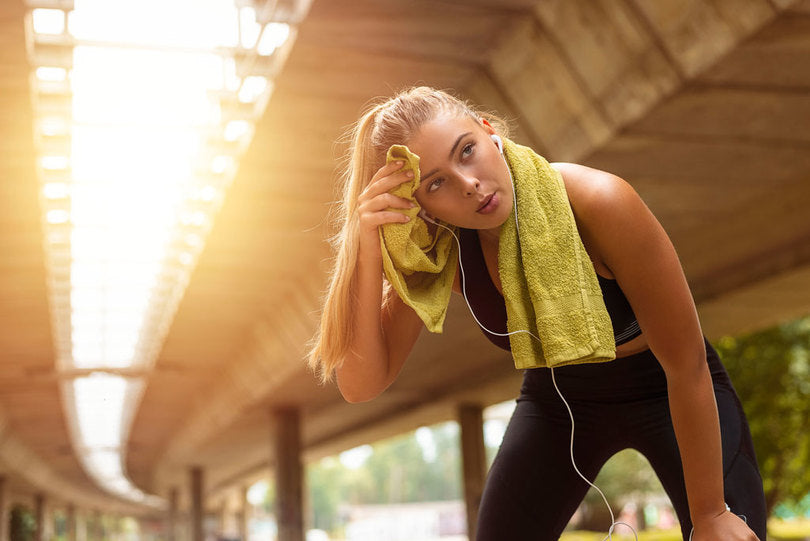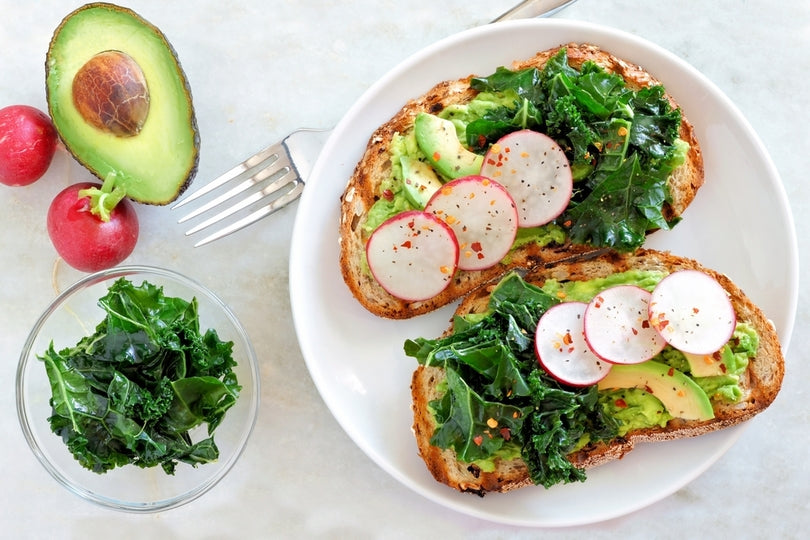6 Ways To Get Rid Of Shin Splints


If you’ve come back from a walk or a workout with the feeling that your shins are on fire, you are probably all too familiar with shin splints! It can be a really painful condition and it can slow down your fitness progress while you wait for your legs to get better.
While occasionally you might want an excuse to avoid exercise, shin splints are definitely not something you wish for. For some people, they can be a recurring problem that may require help from a healthcare professional.
Today, I thought it would be helpful to look at what shin splints are and what causes them so you can minimise the risk of developing them while you train. I’m also going to share some tips that may help if you’re wondering how to get rid of shin splints.
Find out:
What are shin splints?
The term shin splints (sometimes called medial tibial stress syndrome) is used to describe shin pain or inflammation that is felt along the inside or the front edges of the shin.
Sore shins and shin splints can be common for people who play soccer, basketball and tennis because these sports tend to add extra stress to the shins due to quickly stopping and starting a lot in a game. People who run a lot, especially those who are just starting out, may also be prone to shin splints.
What causes shin splints?
There are a number of reasons why shin splints can happen. Sore shins could be due to one cause or a combination.
Some of the common shin splints causes include:
- Excessive training
- Muscle imbalances or tightness, particularly in the calves
- Poor technique, particularly when running
- Unsupportive footwear (including training in footwear that is worn out) or wearing the wrong workout shoes for the intensity of the exercise
- A sudden increase in the amount of exercise or the intensity of training
- Improper training
- Regular training on uneven, sloping or hard surfaces
- Problems with foot posture, such as overpronation or flat feet.
;Shin splints can also be a sign of a problem with running style. For example, taking strides that are too long for your natural gait can put excess force on your shins. Feet that roll inwards can also put a strain on the tendons and muscles of your legs, causing trauma.
Now, it isn’t necessarily the exercise causing the problem. Generally, shin splints are caused by repeated stress. That means they can arise because you are pushing your body too hard, too fast or by continuing to train when there is a problem. Basically, your lower leg muscles can become overloaded, so they aren’t able to deal with the impact of landings, or things like quick direction changes, as well as they would usually.

Shin splints FAQ
It can be frustrating to develop shin splints or any type of lower leg pain when you are trying to stick to a training program. As always, knowledge is power, particularly if you want to reduce the risk of developing shin splints!

What do shin splints feel like?
People suffering from shin splints may feel a dull, aching pain in the lower leg.
Touching the shin bone after a run and noticing it feels hot or sore can also be a sign of shin splints. The skin may even be red, which indicates there is some inflammation.
Shin splints can become painful when starting exercise but may go away once your body starts to warm up. When you’ve finished training, you might notice the pain comes back.

How to help shin splints
While prevention is always better than cure, shin splints can develop over time. That’s why improving your overall fitness gradually is the best way to reduce your risk of injury.
For sore shins, you can help them by taking a break from any high-intensity training (I know! I know!).
In the short-term, the pain caused by shin splints can be treated like many other injuries. Ice packs can help to reduce any heat and swelling or to calm inflammation. Applying an ice pack for 20 minutes every 2-4 hours should give you some relief.
If you’re someone who has been wearing the same workout shoes for the last three or four years, then it is time to go shopping! While it can be tempting to go for the pretty, brightly coloured shoes (or white ones, in my case!), it is important to remember that function is far more important than fashion! Choose a shoe that is right for both your style of training and your foot.

How long do shin splints last?
How long shin splints last usually depends on the severity of the problem.
For moderate cases, applying an ice pack and scaling back your exercise routine for a little while might be all you need for your body to recover.
You can also follow the tips below to find out how to get rid of shin splints or to manage them more effectively and then incorporate these tips into your routine.
For more severe cases of shin splints, you may need to see a healthcare professional for help to manage your condition.
Once you’re feeling better, slowly get back into your training. Do some low-impact workouts and gradually increase the intensity. You don’t want to go back to square one with another injury!
If you still have sore shins after resting for a few days, it’s best to be checked out by your healthcare professional. Shin pain can be a sign of a stress fracture or even something known as anterior compartment syndrome. If you’re not noticing any relief after a few days of rest, it’s possible the problem is more than shin splints.
How to get rid of shin splints
These 6 tips can help set you on the right path!

1. Stretch your calves and shins
When you stretch your calf muscles and shins, you are helping to increase the flexibility in your legs. Poor flexibility can contribute to shin splints, so try to add stretching to your regular routine.

2. Warm up before a workout
There is no escaping this advice! Warming up before exercise is important to prepare your muscles — plus a cool down and regular recovery sessions are also important to help shin splints.

3. Foam roll
How to get rid of shin splints with equipment you already have at home — grab your foam roller! Foam rolling your calves, as well as your tibialis anterior (the muscle that runs along the outside of your shin bone) can help to reduce inflammation as it gets the blood flowing.
Take it slowly — I try to allow about 40 seconds but don’t push yourself if it is too painful. Make this a regular part of your routine and it could help to reduce the severity of shin splints.

4. Strengthen your lower leg muscles and core
Muscle weakness or imbalance can be a cause of shin splints. So, one way to strengthen your lower legs is to perform calf raises. Complete three sets of 20 repetitions a few times a week and feel the difference!
Improving your core strength can also really help — your core gives your legs lots of support during exercise.

5. Check your form
As I explained above, shin splints can be caused by poor exercise form, which places more strain on lower leg muscles. If you are a runner, pay attention to your running technique. Some styles of running are more prone to shin splints than others — if your heel touches the ground first, for example, it can cause an imbalance in the pressure on your legs.

6. Add resistance training to your routine
Adding resistance to your workouts can help your muscles and tendons to increase their capacity. Whether you train with weights in the gym or do bodyweight exercises, these can all help to reduce shin pain!
Now you know how to get rid of shin splints
While they can be painful and frustrating, shin splints don’t need to stop you from training — they also don’t have to be a reason you are no longer seeing results.
Shin splints are no fun but they can be treatable. I hope these tips on how to get rid of shin splints are useful for you!
Love, Kayla xx
* Disclaimer: This blog post is not intended to replace the advice of a medical professional. The above information should not be used to diagnose, treat, or prevent any disease or medical condition. Please consult your doctor before making any changes to your diet, sleep methods, daily activity, or fitness routine. Sweat assumes no responsibility for any personal injury or damage sustained by any recommendations, opinions, or advice given in this article.




<#= c.user.username #><#= moment(c.created_at * 1000).fromNow() #>
<#= c.html_body #> <# if (c.images) { #>
<# } #>